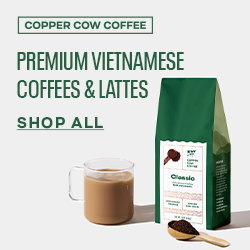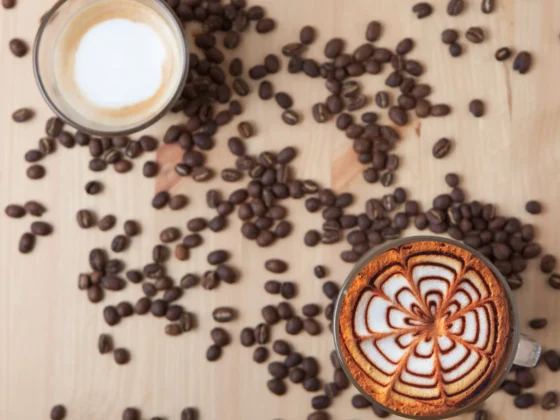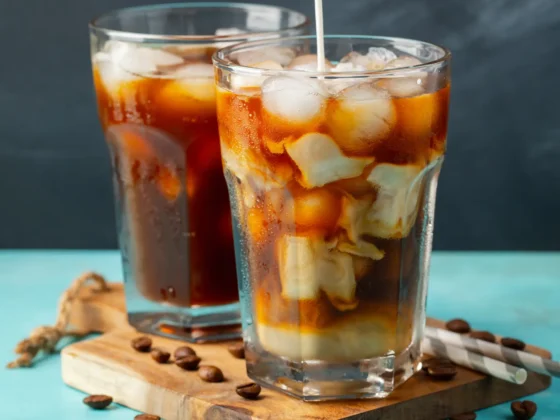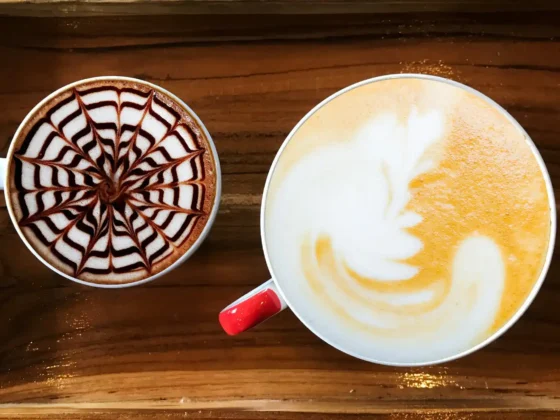In the diverse world of coffee, the debate of Macchiato vs Latte often surfaces among enthusiasts and connoisseurs alike. These two iconic Italian beverages have etched a prominent place in coffee culture globally, each offering a unique experience in flavor, texture, and preparation. This article delves into a detailed comparison between Macchiato and Latte, unraveling their distinct characteristics, from the rich, espresso-forward taste of the Macchiato to the creamy, milder profile of the Latte. We’ll explore their historical origins, cultural significance, and the evolving trends that continue to shape their popularity in the coffee community. Join us as we navigate through the nuances that set these two beloved coffee drinks apart, offering insights for both the curious newcomer and the seasoned aficionado.
Tired of reading? Give your eyes a rest and listen to the article here.
- Introduction & Key Differences
- https://app.mysoundwise.com/tracks/17006657027052075e.mp3
- Understanding the Basics
- https://app.mysoundwise.com/tracks/17006657332620964e.mp3
- Brewing Techniques
- https://app.mysoundwise.com/tracks/17006657618751003e.mp3
- Flavor Profiles and Variations
- https://app.mysoundwise.com/tracks/17006657905958904e.mp3
- Nutritional Aspects and Health Considerations
- https://app.mysoundwise.com/tracks/17006658211747019e.mp3
- Coffee Culture and Trends
- https://app.mysoundwise.com/tracks/17006658498808850e.mp3
- Conclusion & FAQs
- https://app.mysoundwise.com/tracks/17006658791213711e.mp3
Latte vs Macchiato: Key Differences
- Flavor Profile: Macchiatos have a bold, espresso-dominant flavor due to a higher espresso-to-milk ratio, while Lattes are milder and creamier with more milk.
- Milk Content and Texture: Lattes combine steamed milk with espresso for a creamy texture, whereas Macchiatos feature minimal milk, typically just a froth topping.
- Cultural Significance: The Macchiato is rooted in Italian tradition as a quick espresso drink, while the Latte has evolved into a popular, leisurely beverage with various flavors.
- Presentation: Latte art is common in Lattes, showcasing intricate designs, unlike the simpler presentation of Macchiatos.
- Customization: Lattes offer diverse flavor variations with added syrups, while Macchiatos typically focus on the espresso’s pure taste.
Macchiato vs Latte: Understanding the Basics
Diving into the world of espresso-based beverages, particularly Macchiatos and Lattes, reveals a rich tapestry of flavors, textures, and histories. Understanding these popular drinks requires an appreciation of their ingredients, preparation methods, and cultural significance.
What is a Macchiato?
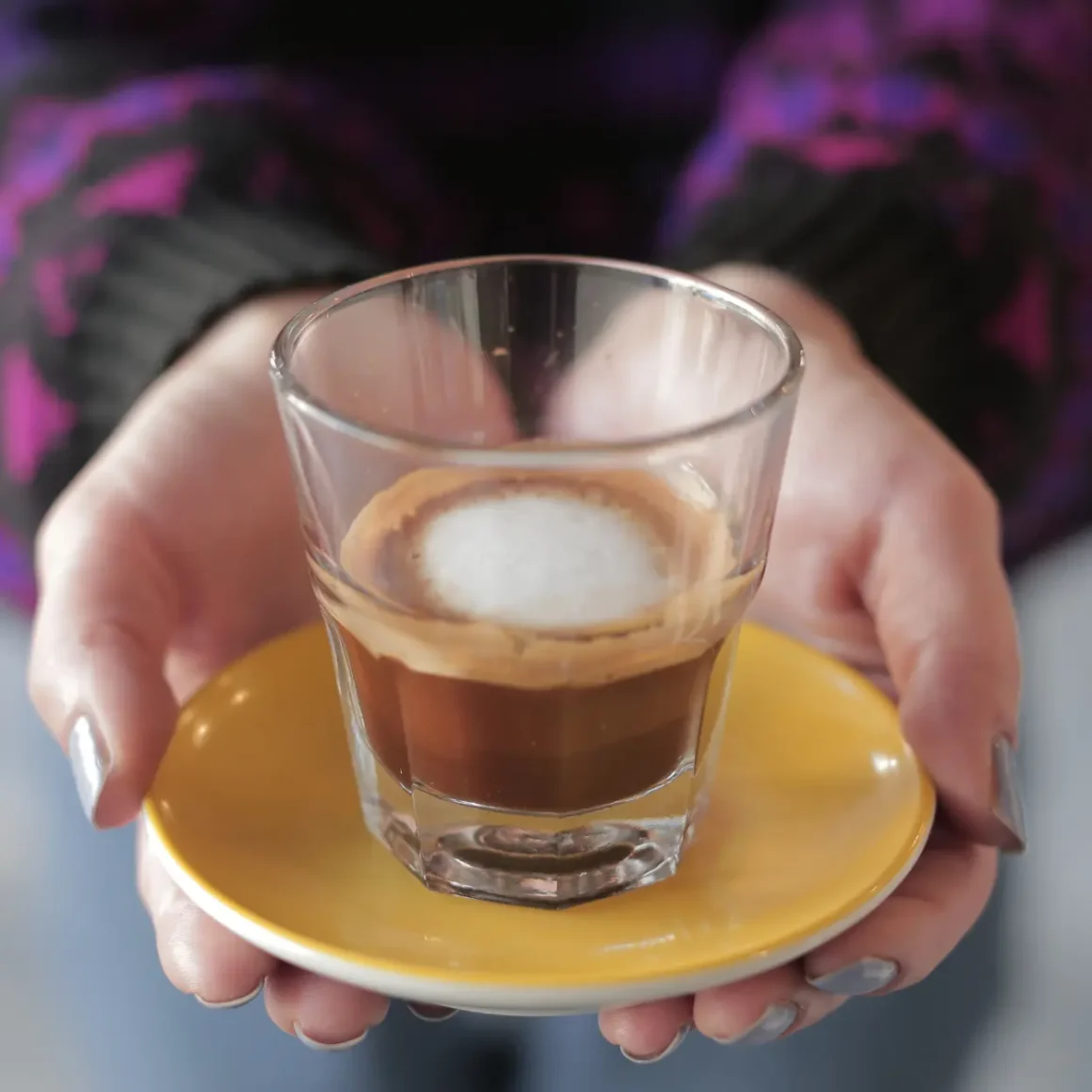
The Macchiato, specifically the Caffè Macchiato or Espresso Macchiato, stands as a distinct coffee beverage known for its bold flavor profile and unique preparation.
- Espresso Dominance: Predominantly featuring espresso, the Macchiato typically has a strong coffee taste, emphasized by a modest addition of milk, often foamed.
- Milk-to-Coffee Ratio: With a general ratio of 1:2 milk-to-coffee, the Macchiato maintains a robust espresso presence.
- Texture: The texture is characterized by a thin layer of foam or microfoam, adding subtle smoothness without overwhelming the espresso’s boldness.
Ultimately, the Macchiato offers an espresso-centric experience, perfect for those who enjoy the rich, unadulterated flavors of coffee with just a hint of creaminess.
What is a Latte?
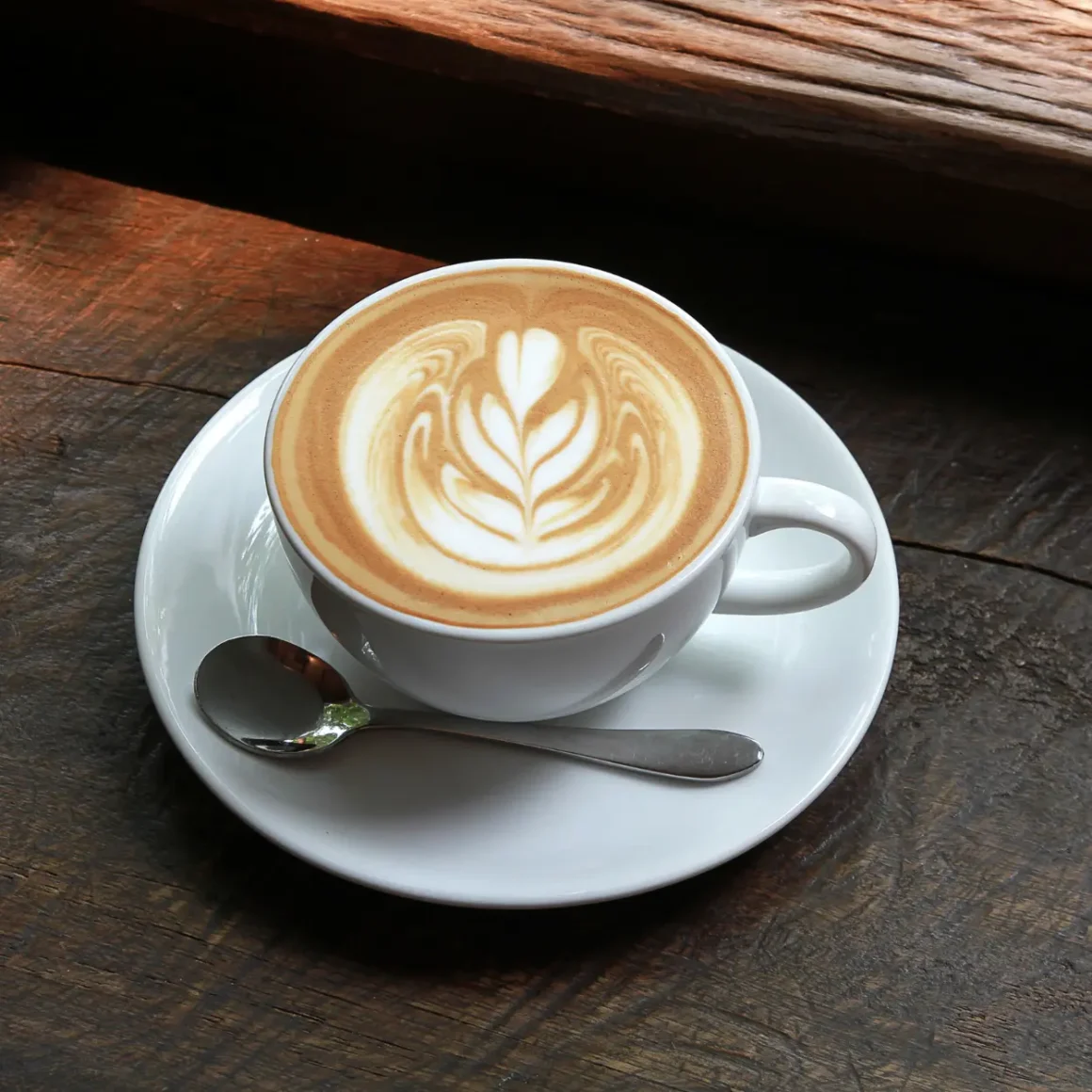
The Latte, or Caffe Latte, is an Italian classic that harmonizes espresso and steamed milk, creating a milder and creamier beverage compared to the Macchiato.
- Balanced Flavor: The Latte features a 2:1 milk-to-coffee ratio, leading to a smoother and more delicate coffee flavor.
- Milk Integration: Unlike the Macchiato, the steamed milk in a Latte is thoroughly mixed with espresso, resulting in a creamy and homogenous texture.
- Versatility: Lattes are known for their adaptability, often customized with the best coffee syrup, catering to a wide range of taste preferences.
The Latte stands as a versatile and popular choice for coffee enthusiasts, offering a less intense but equally satisfying coffee experience, perfect for those who appreciate subtlety and richness in their cup.
The Historical Origins of Macchiato and Latte
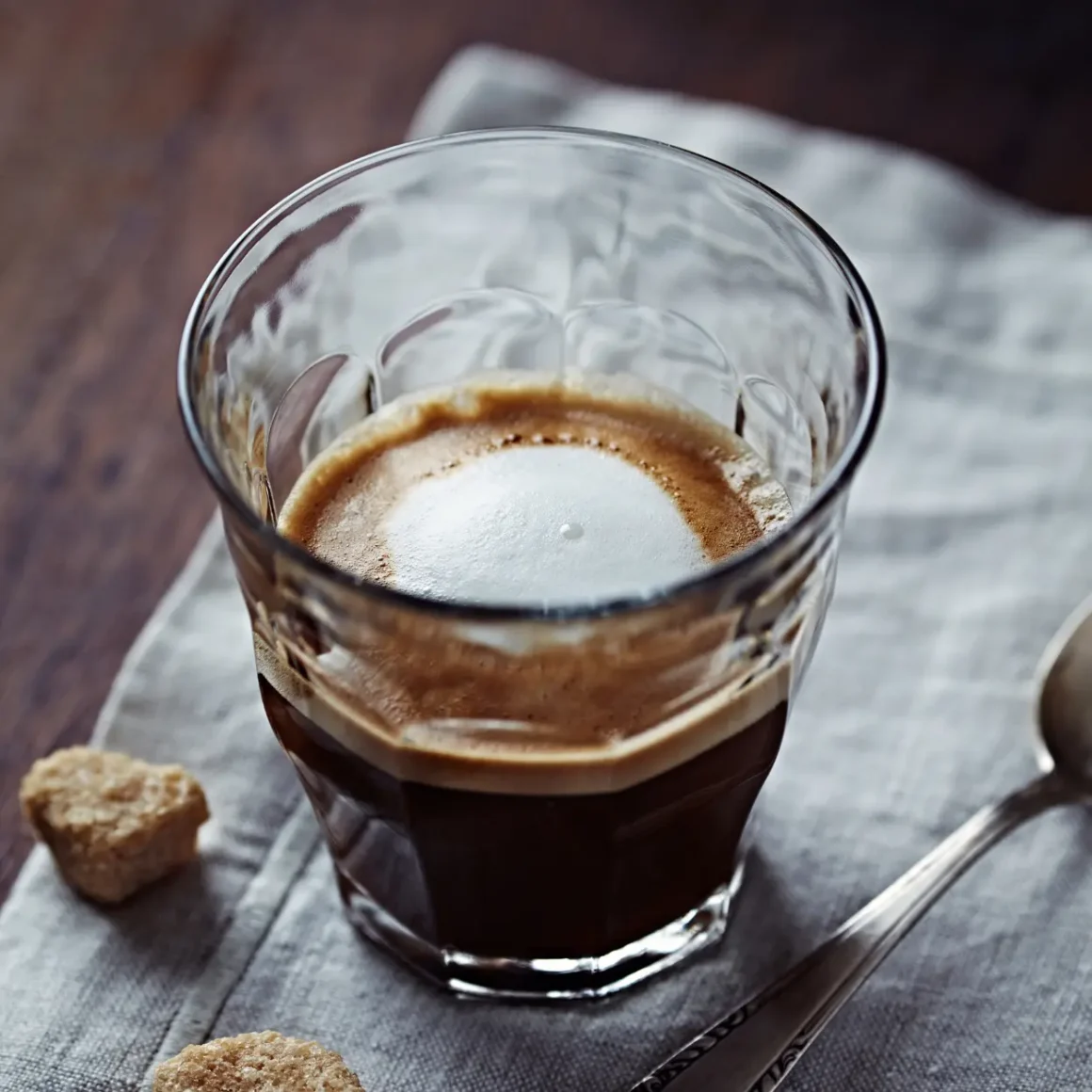
Tracing the origins of Macchiato and Latte takes us on a journey through European history and the evolution of coffee culture.
- Macchiato Etymology: The origin of the term “macchiato” holds a captivating history rooted in the necessity for baristas to distinguish between a regular espresso and one adorned with a small amount of milk. In this context, the latter variation of the coffee was coined as “marked.” This intriguing historical facet is mirrored in the Portuguese designation for this delightful beverage, referred to as “café pingado,” which essentially translates to coffee with a droplet. (1)
- Coffee Introduction to Vienna: Coffee’s introduction to Vienna, Austria, in 1529, was significantly influenced by the Turks. This marked a momentous occasion in the global propagation of coffee culture, as Vienna emerged as one of the early European cities to embrace this invigorating delight.
- European Mention of Coffee: The inception of coffee in European literature dates back to 1575, a significant historical milestone chronicled in Charles de l’Ecluse’s work. The incorporation of coffee into European writings heralded the commencement of its journey toward becoming a prevalent beverage on the continent. (2)
- Traditional Coffee Consumption: Various cultures have cultivated their distinct traditional approaches to savoring coffee. Expressions like Caffè e latte,” “Milchkaffee,” “café au lait,” and “café con leche” are employed to depict these customary methods of coffee consumption, often as an integral component of morning rituals within households. These terms accentuate the diverse and rich coffee customs that have evolved across various regions and societies.
Latte and Macchiato: Brewing Techniques
Mastering the art of brewing coffee is the first step towards creating delicious Macchiatos and Lattes at home. With the right techniques and a bit of practice, you can enjoy high-quality coffee drinks without the need for expensive equipment or a trip to the café.
How to Make a Macchiato
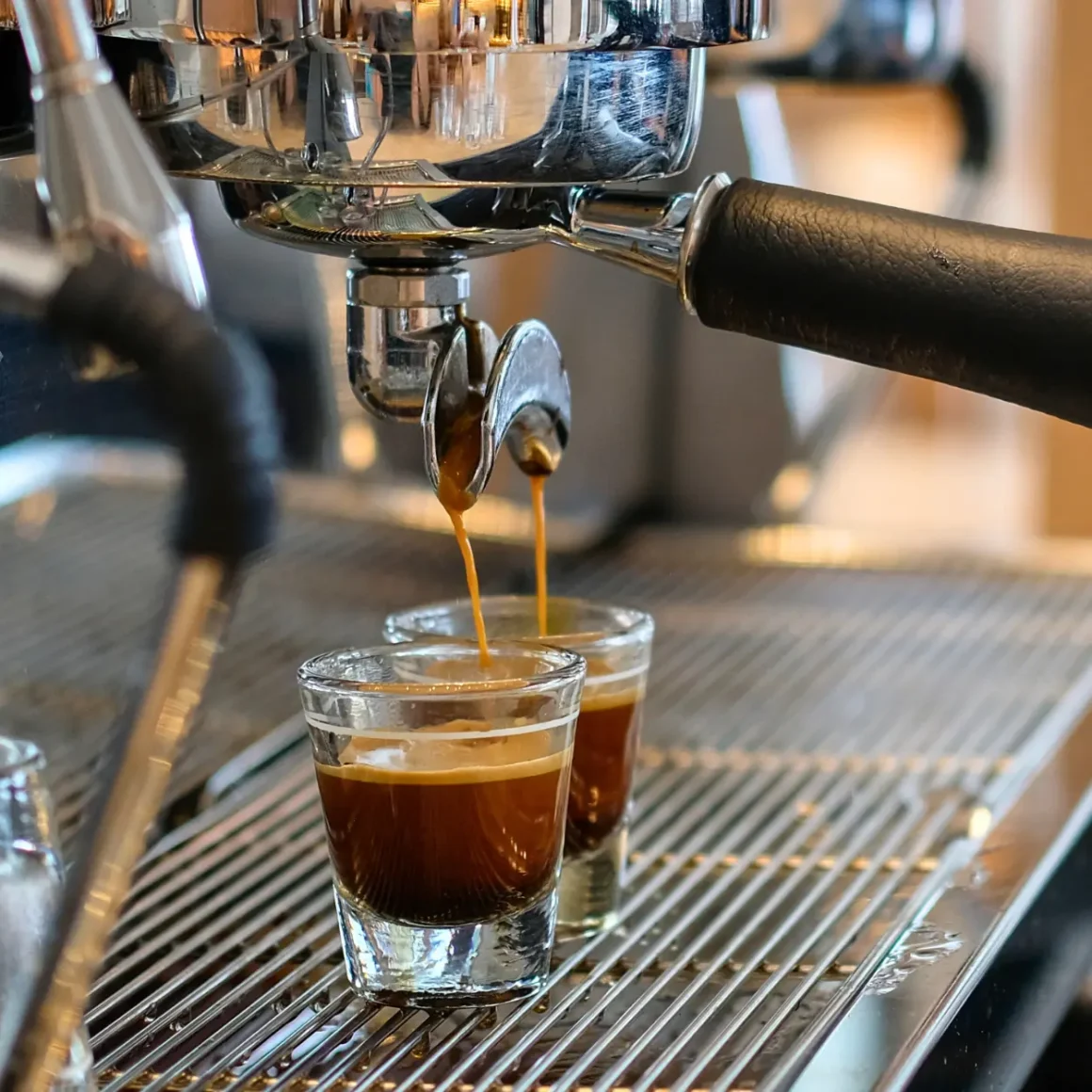
Making a Caffè Macchiato at home is a simple yet rewarding process. This drink highlights the rich flavor of espresso with just a touch of frothed milk.
- Brew the Espresso: Start by brewing a strong single or double shot of espresso using an espresso machine, French Press coffee maker, or even an espresso pod for convenience.
- Froth the Milk: Without needing a professional frother, froth your milk until it’s light and airy. This can be done using a simple jar-shake method or with a small handheld frother.
- Assemble the Macchiato: Pour the freshly brewed espresso into a cup. Gently spoon the frothed milk on top of the espresso. The key is to keep it minimal, just enough to ‘mark’ the coffee.
A well-made Macchiato is a testament to the bold flavors of espresso, complemented by just a hint of milkiness. The simplicity of its preparation makes it a favorite for espresso purists.
How to Make a Latte
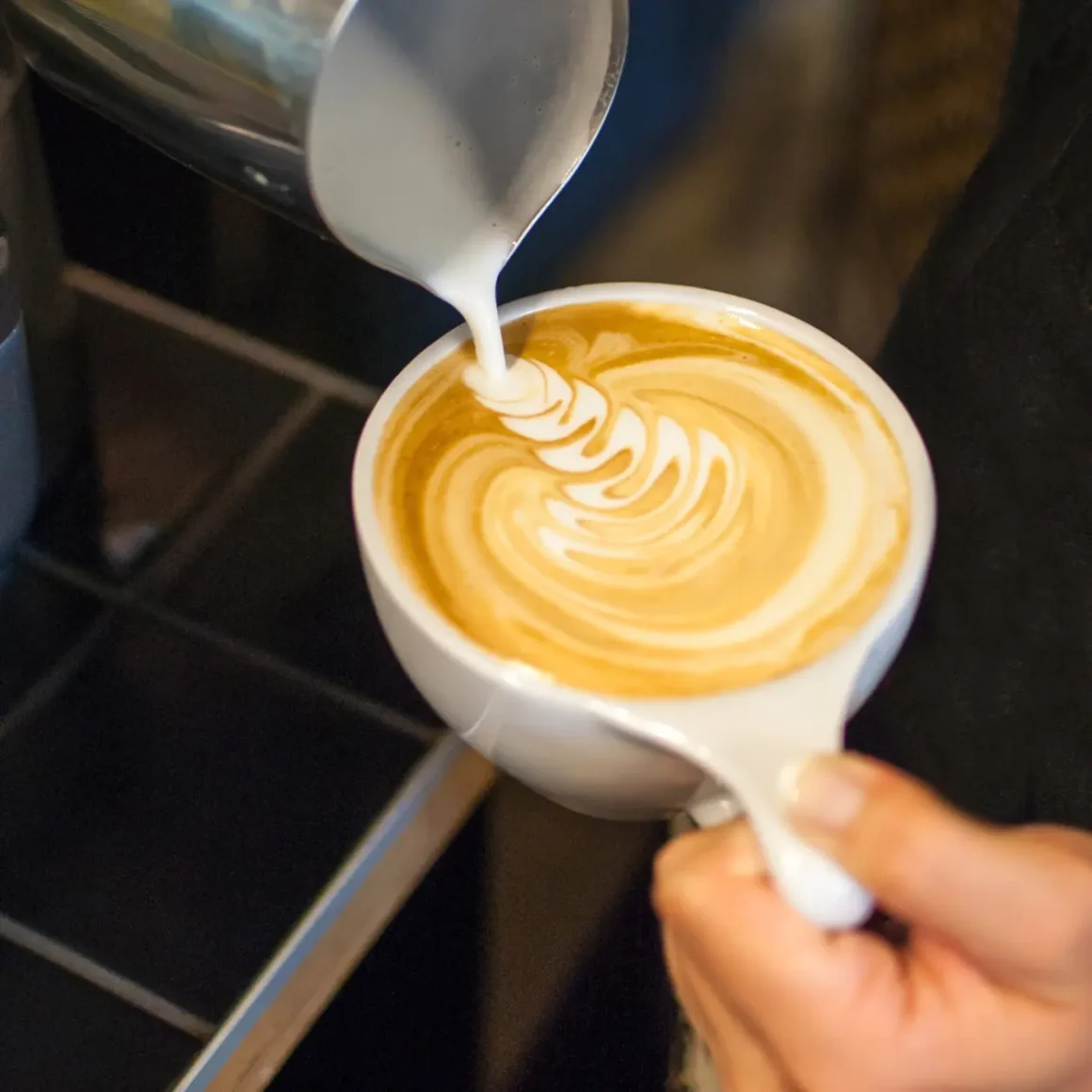
Creating a Cafe Latte at home involves a harmonious blend of espresso and steamed milk. This popular coffee drink is known for its creamy texture and can be easily prepared with basic kitchen tools.
- Prepare the Espresso: As with the Macchiato, begin by brewing a rich and robust espresso shot. The strength of the espresso forms the base flavor of your Latte.
- Steam the Milk: Heat the milk until it’s warm and steamy. If you don’t have a steaming wand, heat the milk on the stove or in a microwave, then froth it until it’s smooth and velvety.
- Combine and Pour: Fill about one-third of your cup with the brewed espresso. Slowly add the steamed milk until the cup is nearly full, creating a 2:1 ratio of milk to coffee. Gently stir to blend the layers.
Barista Secrets for Macchiato and Latte

Baristas employ specific techniques and secrets to elevate the simple act of coffee making into an art form, especially when preparing Macchiatos and Lattes.
- Layering in Latte Macchiato: If you have a passion for both latte and macchiato, consider experimenting with the Latte Macchiato. (3) Begin by pouring espresso into the milk, resulting in a unique layered presentation.
- Foam for Macchiato: Add just a dollop of milk foam to the espresso in a Macchiato, highlighting the coffee’s strength with minimal milk interference.
- Latte Art Mastery: Achieving beautiful Latte Art involves controlling the pitcher’s height, position, and flow during pouring. Practice makes perfect in creating designs like rosettas or hearts.
- Personal Touches: Experiment with sprinkling cinnamon or cocoa powder, or even attempting basic Latte Art, to add a personal flair to your Lattes.
The key to a perfect Latte lies in the balance between the espresso and the milk, achieving a drink that’s both comforting and invigorating. With a little practice, you can create a cafe-quality Latte right in your kitchen.
Macchiato vs Latte: Flavor Profiles and Variations
Exploring the world of coffee, particularly Macchiatos and Lattes, unveils a spectrum of flavor profiles and variations. Each drink offers a unique taste experience, influenced by the choice of ingredients, preparation methods, and regional influences.
Tasting Notes: Macchiato vs Latte

Understanding the flavor nuances of Macchiato and Latte is key to appreciating these popular coffee drinks. Each has its distinct taste profile, determined by the balance of coffee and milk.
- Macchiato: Known for its espresso-forward flavor, the Macchiato offers a robust and rich coffee taste. With a 1:2 milk-to-coffee ratio, the strength of the espresso is pronounced, complemented by just a touch of milk.
- Latte: The Cafe Latte, in contrast, has a more balanced and mellow flavor. The 2:1 milk-to-coffee ratio results in a creamier, subtly sweet taste where the milk’s texture and warmth play a significant role.
While the Macchiato caters to those who favor a strong coffee punch, the Latte appeals to those who enjoy a softer, smoother coffee experience.
Regional Variations and Twists
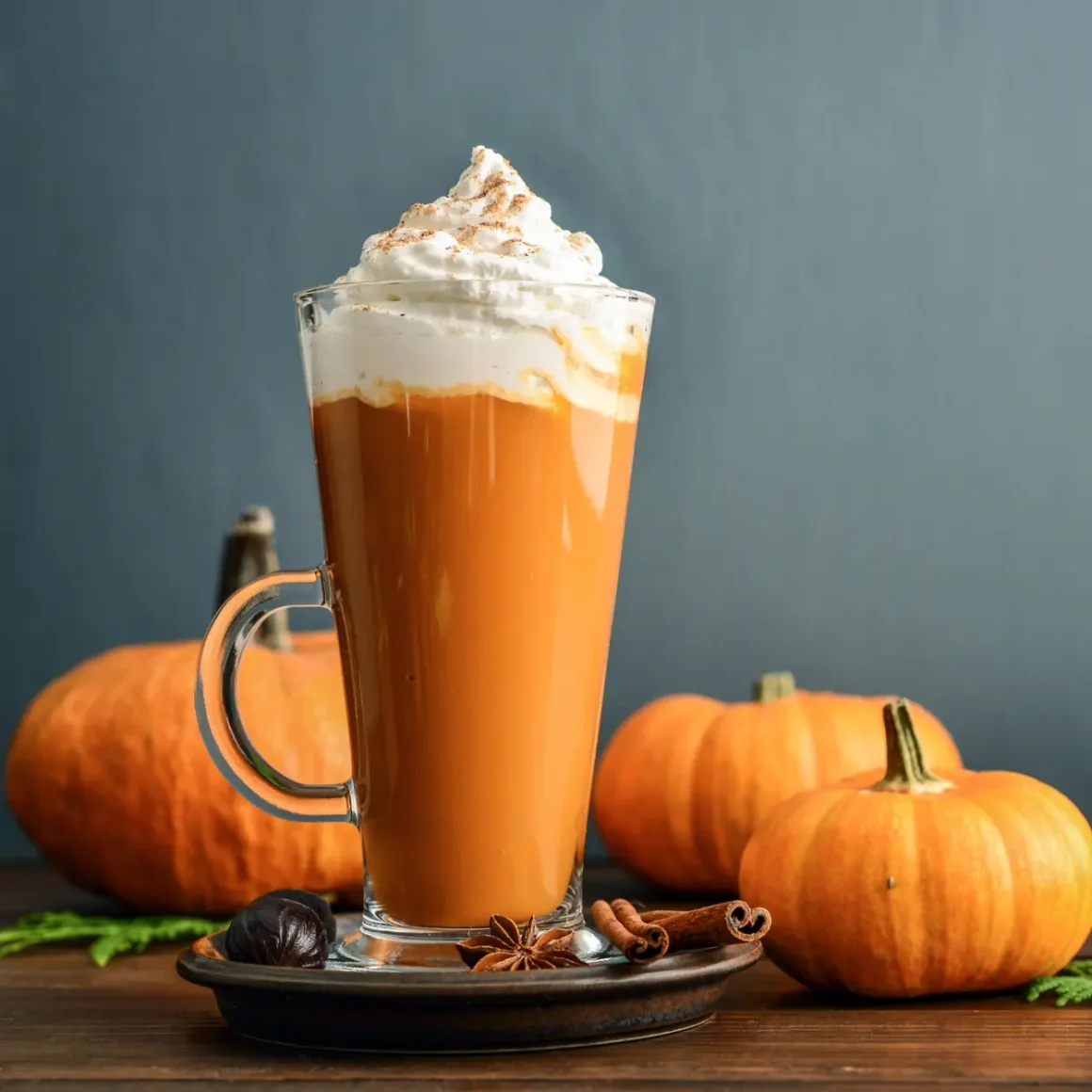
Across the globe, Macchiatos and Lattes have been adapted and reimagined, leading to a delightful variety of regional twists.
- Caramel Macchiato: A sweet twist on the classic, often topped with extra caramel syrup and whipped cream.
- Iced Latte: A refreshing variation, perfect for warmer climates or summer days.
- Matcha Latte: A fusion of traditional tea and coffee culture, incorporating the earthy flavors of matcha.
- Pumpkin Spice Latte: A seasonal favorite, blending the rich flavors of pumpkin spice into the creamy latte.
- Chai Latte: Combining the spiced warmth of chai with the smoothness of a latte.
- Brown Sugar Latte: Adding a deep, molasses-like sweetness with brown sugar, sometimes enhanced with brown sugar oatmilk creamer.
These regional variations not only reflect cultural preferences but also offer an exciting way to explore different flavors within the familiar framework of Macchiatos and Lattes.
Pairing with Food: Best Practices
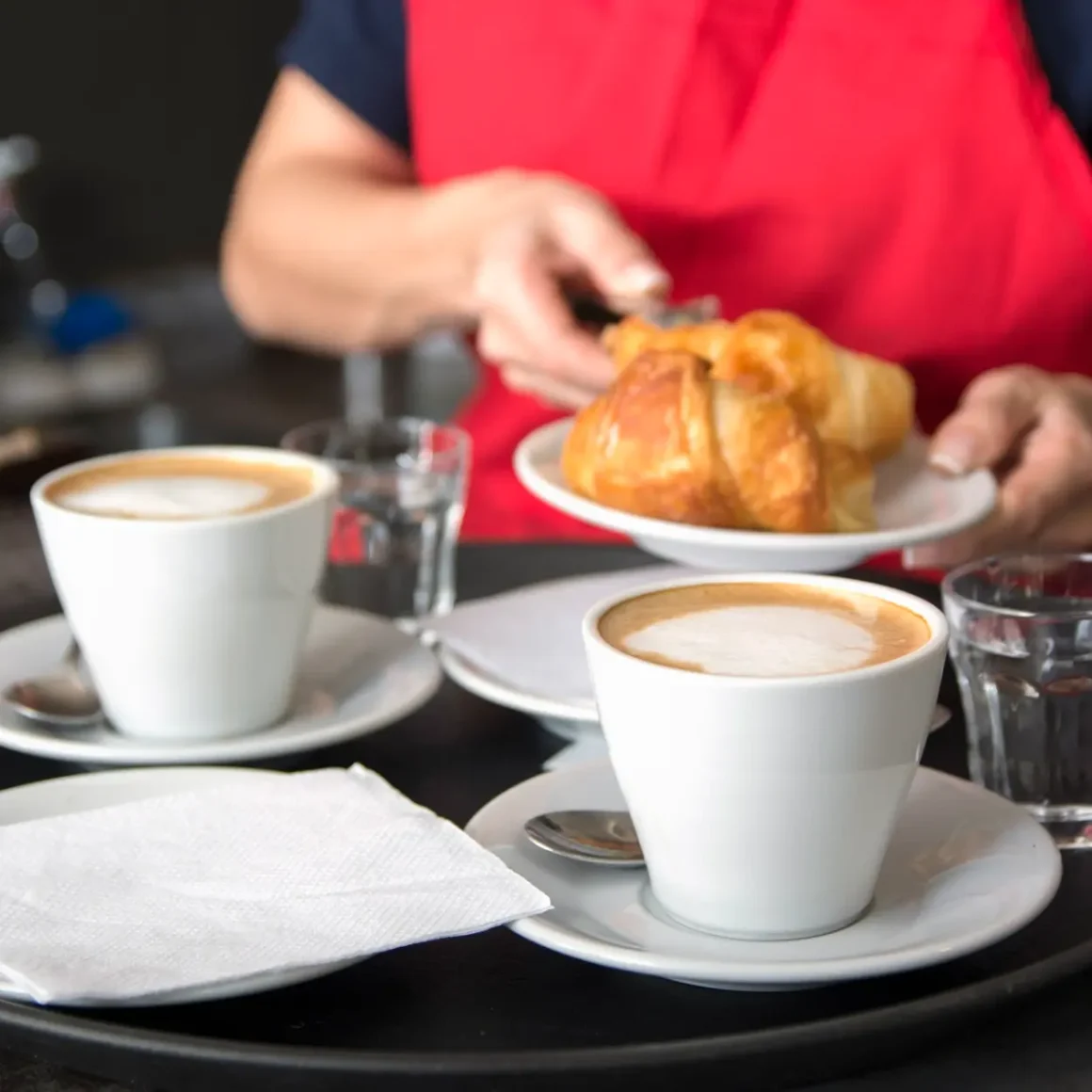
Pairing the right food with your coffee can enhance the overall flavor experience. Whether it’s a Macchiato or a Latte, choosing complementary food items is an art in itself.
- With Macchiatos: Due to their strong coffee flavor, pair them with rich desserts like chocolate cake or tiramisu. Savory options like a croissant or a cheese platter also work well.
- With Lattes: Their milder taste pairs beautifully with sweet pastries, muffins, or fruit tarts. For a heartier option, consider a breakfast sandwich or quiche.
The best coffee pairings not only complement the flavors of the drink but also create a harmonious balance between the food and the beverage, elevating the overall dining experience.
Nutritional Aspects and Health Considerations
When indulging in popular coffee beverages like Macchiatos and Lattes, it’s important to consider their nutritional aspects and health implications. Understanding the caloric content, caffeine levels, and dairy options can help coffee enthusiasts make informed choices that align with their health and dietary preferences.
Caloric Content and Nutritional Breakdown
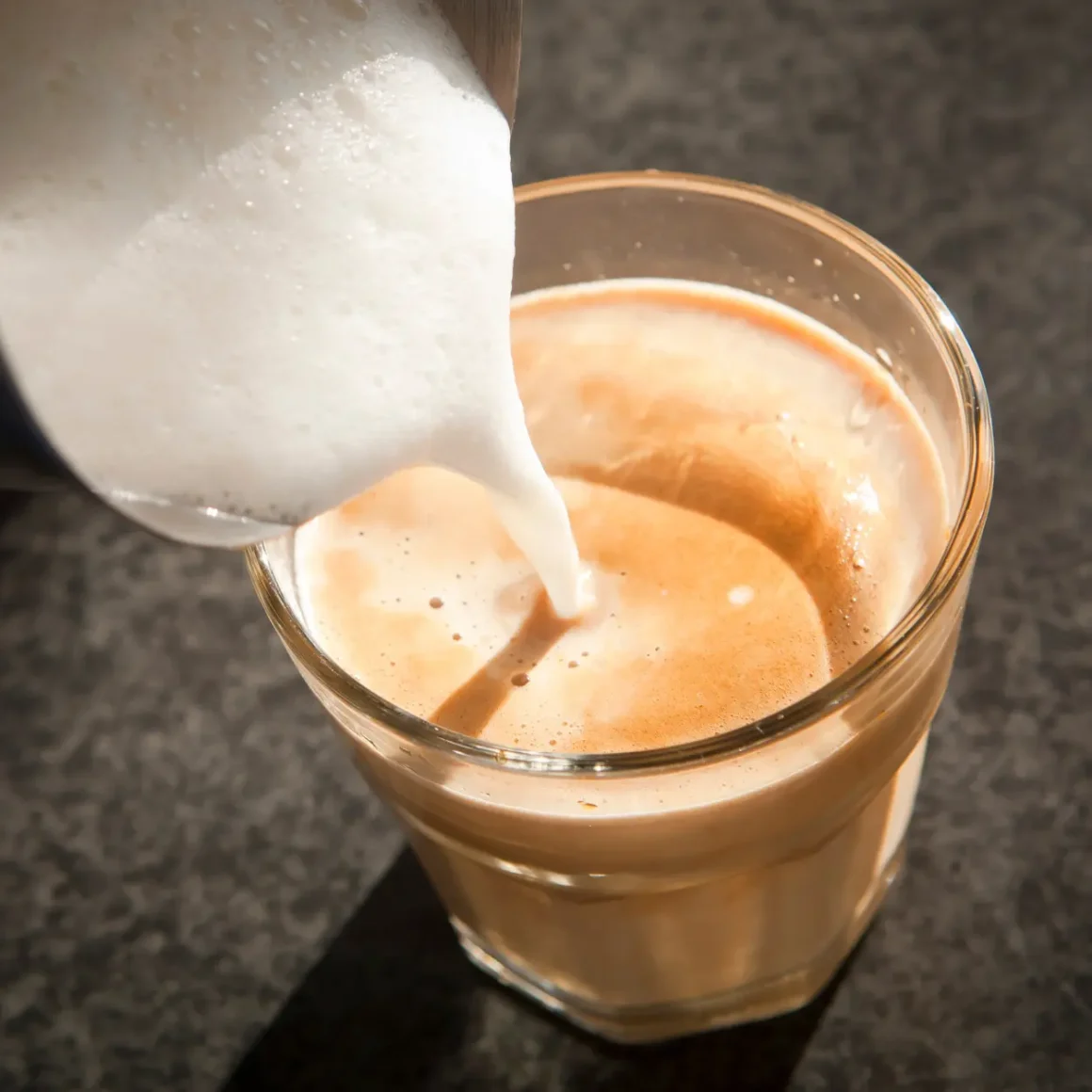
The caloric and nutritional content of coffee drinks varies significantly based on ingredients and preparation methods. Knowing these details can guide you in enjoying your favorite coffee responsibly.
- Espresso Base: The espresso in Macchiatos and Lattes is low in calories, typically containing only 1-2 calories per ounce.
- Milk Choices: The type of milk used significantly impacts the calorie count. Whole milk adds more calories and fat, while skim milk reduces these numbers.
- Additives: Sweeteners, flavored syrups, and toppings like whipped cream substantially increase the calorie and sugar content of the drink.
- Latte caloric content: The caloric content of a standard latte can vary based on factors such as the size of the serving and any additional flavorings or syrups. On average, a small (8-ounce) latte with whole milk contains approximately 120 to 190 calories.
- Macchiato caloric content: Macchiatos are generally lower in calories compared to lattes due to their minimal ingredients. A typical macchiato, comprising a shot of espresso and a small amount of milk foam, contains roughly 10 to 50 calories.
Being mindful of the ingredients and their proportions can help manage the nutritional impact of your coffee choices, allowing you to enjoy these beverages as part of a balanced diet.
Learn more about Coffee & Calories: Coffee Calories Explained
Understanding Caffeine Content
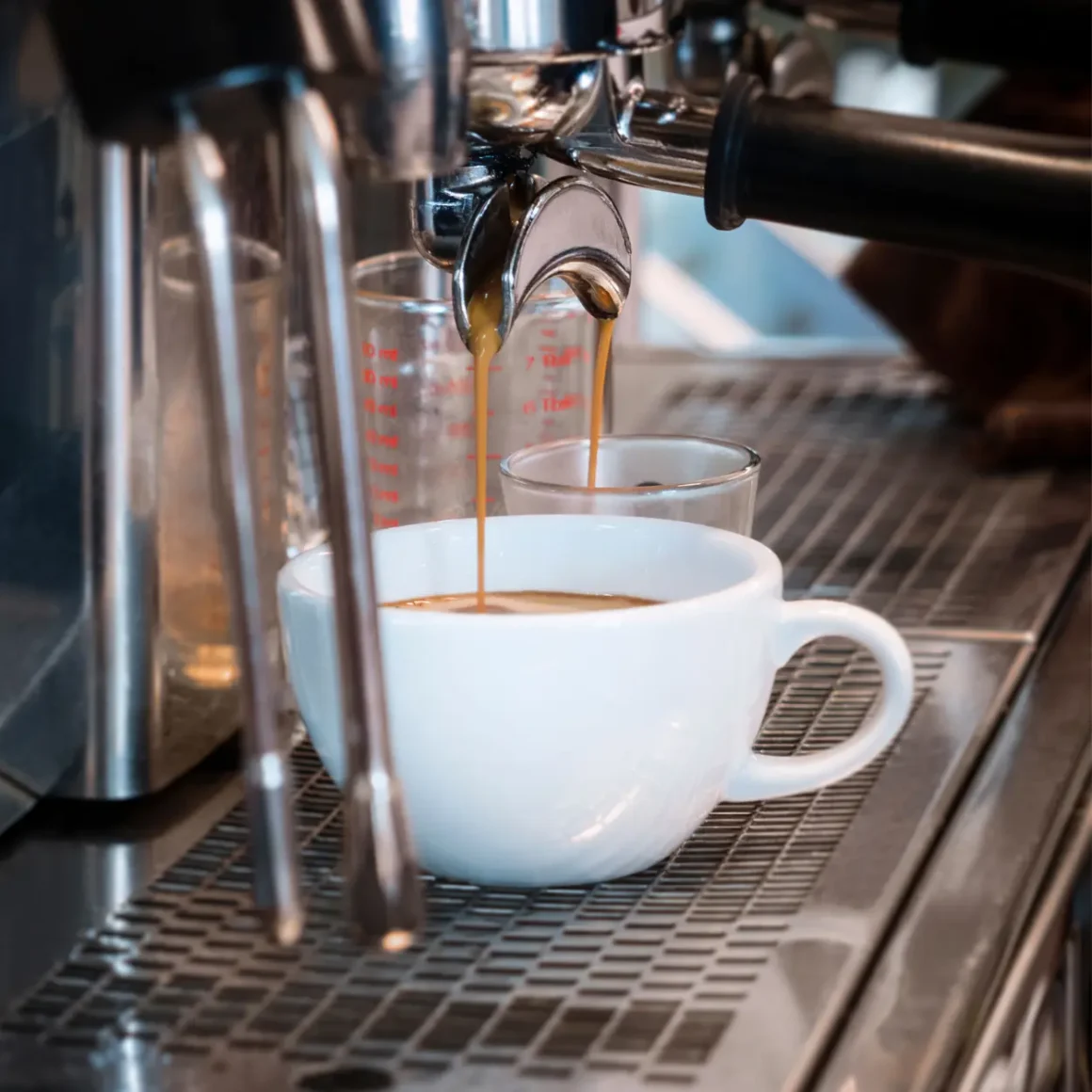
Caffeine content is a crucial aspect to consider for both health reasons and personal preferences. Macchiatos and Lattes have different caffeine levels owing to their preparation methods.
- Espresso Shots: A single shot of espresso, typically used in these drinks, contains about 63 mg of caffeine.
- Serving Size: Macchiatos often have more espresso and hence more caffeine, especially if multiple shots are used.
- Individual Sensitivity: It’s important to consider personal sensitivity to caffeine when choosing your drink, particularly for those with caffeine sensitivities or restrictions.
Understanding the caffeine content can help in making choices that align with your health needs and lifestyle, ensuring a pleasurable coffee experience without unwanted side effects.
Dairy and Non-Dairy Options
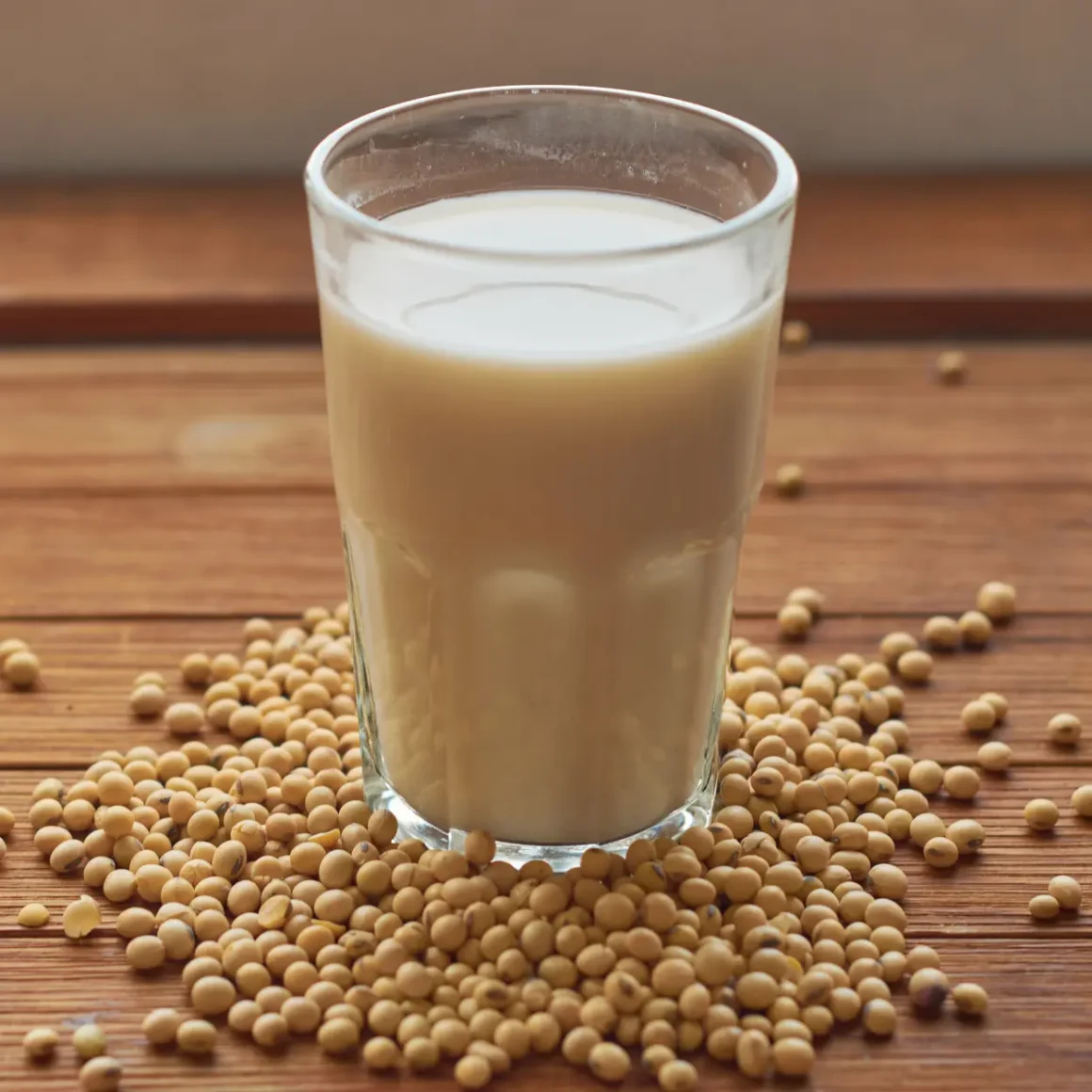
In recent years, the availability of dairy and non-dairy options has expanded, catering to various dietary requirements and preferences.
- Traditional Dairy: Whole, skim and 2% milk are the standard choices, each varying in fat and calorie content.
- Non-Dairy Alternatives: Soy, almond, oat, and coconut milk are popular non-dairy options. They offer different nutritional profiles, often lower in calories and fat than whole milk.
- Lactose-Free Options: Lactose-free milk provides a solution for those with lactose intolerance, retaining the taste and nutritional value of regular milk.
With a range of dairy and non-dairy options available, everyone can enjoy their favorite coffee drinks without compromising on taste, health, or dietary needs. This inclusivity ensures that coffee remains a universally loved beverage.
Coffee Culture and Trends

Coffee culture has evolved dramatically over the years, shaping and being shaped by societal trends and preferences. The popularization of drinks like Macchiatos and Lattes is a testament to this evolution, reflecting changes in consumer tastes, lifestyles, and social habits.
Macchiato and Latte in Popular Culture
The rise of Macchiato and Latte in popular culture is a fascinating journey that mirrors broader trends in society. These beverages have become more than just drinks; they are symbols of modern coffee culture and lifestyle choices.
- Iconic Status: Macchiatos and Lattes have transcended their Italian origins to become iconic symbols in coffee culture worldwide, often featured in media and entertainment.
- Celebrity Influence: The popularity of these drinks has been bolstered by celebrity endorsements and appearances in popular TV shows and movies.
- Social Media: Platforms like Instagram and Pinterest have turned Macchiato and Latte into artistic expressions, with images of beautifully crafted drinks gaining significant attention.
The prominence of Macchiato and Latte in popular culture underscores their role not just as beverages, but as cultural icons that resonate with contemporary lifestyles and social trends.
The Role of Coffee Shops in Evolving Preferences
Coffee shops play a pivotal role in shaping and reflecting coffee consumption trends. They are not just places to get a caffeine fix but are instrumental in introducing new flavors and brewing techniques to the public.
- Innovation Hub: Coffee shops often act as laboratories for experimenting with new coffee flavors, brewing methods, and presentation styles.
- Community and Culture: They serve as community hubs, influencing local coffee culture and preferences through customer interactions and feedback.
- Globalization of Coffee: Chain and specialty coffee shops have globalized coffee culture, making drinks like Macchiato and Latte household names across different countries and cultures.
The evolving role of coffee shops reflects the dynamic nature of coffee culture, continually shaping and being shaped by consumer tastes and preferences.
Future Trends: What’s Next for Macchiato and Latte?
As coffee culture continues to evolve, the future of Macchiato and Latte is poised for further innovation and transformation, influenced by emerging trends and consumer behaviors.
- Health-Conscious Adaptations: With growing health awareness, there’s a trend towards healthier versions of these drinks, using alternative sweeteners and milk options.
- Sustainability Focus: Eco-friendly practices in sourcing and packaging, along with a focus on ethical coffee production, are likely to shape future offerings.
- Technological Integration: Advances in technology may lead to more personalized coffee experiences, with AI and machine learning offering customized drink recommendations.
The future of Macchiato and Latte is likely to be marked by a blend of tradition and innovation, as these beloved beverages adapt to changing consumer preferences and global trends.
Conclusion
In conclusion, the journey through the world of Macchiato vs Latte reveals much more than just the differences in their ingredients and preparation methods. It uncovers a rich tapestry of history, cultural significance, and evolving coffee trends. From understanding what a Macchiato truly is to exploring the subtleties of a Latte, this comparison has highlighted how these drinks reflect personal preferences, lifestyle choices, and even artistic expression in the realm of coffee artistry. Whether it’s the bold and intense flavors of a Macchiato or the smooth, velvety texture of a Latte, both beverages hold a special place in the hearts of coffee lovers worldwide. As we have seen, the choice between Macchiato and Latte goes beyond mere taste – it is a choice steeped in tradition, influenced by contemporary trends, and a reflection of individual coffee experiences.
FAQ
How does the preparation of a macchiato differ from a latte?
Macchiatos are made with a small amount of frothed milk on top of espresso, while lattes involve blending steamed milk thoroughly with espresso.
Can macchiato and latte be made with non-dairy milk?
Yes, both macchiato and latte can be prepared using non-dairy milk alternatives like soy, almond, or oat milk.
What are the calorie counts for a typical macchiato and latte?
A typical macchiato has fewer calories due to less milk, while a latte, especially with added syrups or whole milk, has a higher calorie count.
How have macchiato and latte evolved in coffee culture over the years?
Macchiatos and lattes have evolved from traditional Italian drinks to globally popular beverages, often adapted with new flavors and artistic presentation.




